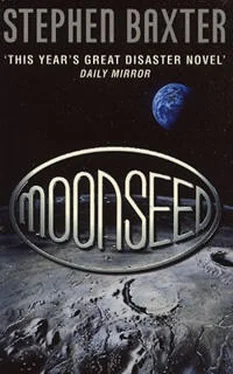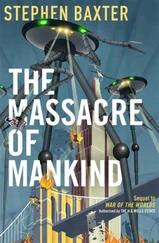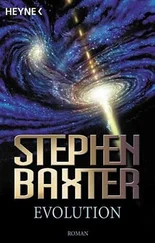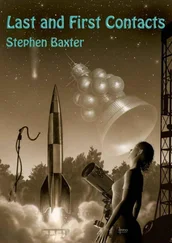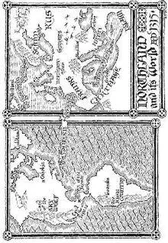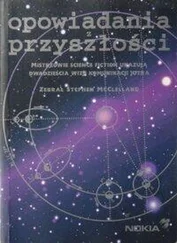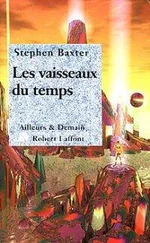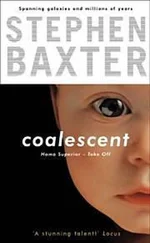“Umm?”
“The excitement out there. String theory describes the high energy stuff. Energies of up to ten to power nineteen giga-electronvolts. Which is ten million billion times higher than anything we could create in any conceivable accelerator. So much was hidden from us, in this low-energy world we inhabit. Like trying to deduce the nature of a lion, after being given a glimpse of his tail.”
“And string theory is a description of the rest of the lion.”
“With about as much guesswork involved. Yes. But now, it’s as if Venus has conveniently transmuted into the biggest particle accelerator in the universe. We can see the stuff we struggled to describe before. Now, even the sceptical types are saying we might reach a true Theory of Everything in five, ten years at most. The excitement is extraordinary…”
But now Alfred had found something else on the IAU net. Evidence of more Planckian cosmic radiation, just a trickle of it, coming — not from a remote planet, not from exotic sources that lay maybe beyond the Galaxy itself — but a lot closer to home.
He pulled up a sketchy diagram from a new preprint: a circle centred on a schematic Earth, two points picked out on the orbit of the Moon. “L4 and L5. Gravitationally stable, like shallow pits in spacetime the places in the Moon’s orbit, ahead of it and behind it, where you’d expect debris to collect. Dust, whatever.”
She looked at the closely-printed text, tried to follow it. “What are they saying? That the Venus killer is there?”
“No. Just that, on a small scale, the processes we’re observing on Venus are replicated there, on a much smaller scale.”
She frowned. “How so? Something working on the raw material there? But what?”
“I don’t know.”
“And how did it get there? Did it start on Venus, and come here, to Earth-Moon? Or…” Or did it start here, on Earth or Moon, and spread out across space, to Venus?
There was, of course, no answer: merely new pieces of the puzzle, fragmentary glimpses, imperfectly described by the staid, passive language of technical papers.
Glimpses of something monstrous.
She wondered how she was going to express this to the Administration.
Something had turned Venus into a kind of giant particle accelerator, orders of magnitude more powerful than anything humans had ever conceived. But that great experiment had wrecked the planet, literally disassembled it, from the core outwards, blowing its surface and atmosphere into space over a timescale, as far as anyone could tell, of no more than a few months.
Something had done this. Or someone.
But who? How? Why? And what, if anything, was going to protect the Earth from a similar cosmic visitation?
If, she thought bleakly, it isn’t already here.
…And in the dark and warmth of an Edinburgh night, Henry tried to explain to Jane what they were finding, in the lab.
“There are two aspects to this. Two structures, if you like. 86047—”
“The Moon rock.”
“ — is coated in a layer of quicksand dust.”
“The same as the Arthur’s Seat stuff?”
“Presumably.”
“Are they connected, then?”
“I don’t know. It would be kind of a coincidence for this stuff to show up in two places independently. We’re not running a clean facility in there. Maybe there’s been some kind of — breach of quarantine.” Quarantine. The word disturbed her, and she tried to figure out why. He said, “Even the surface dust is like nothing we’ve seen before.”
His matter-of-fact tone chilled her. “What do you mean?”
“Each grain has a structure. On the outside there’s a shell of silicate — a rock — although even that’s a mineral we haven’t seen before. Super-quartz, we’ve been calling it.”
“And inside the shell—”
“We don’t know. Whatever is there is beyond the level of resolution of our techniques. Certainly subatomic. Its structure changes with time. Its primary resource is olivine. Mantle rock. Whatever is inside the super-quartz shell is presumably the active agent, whatever starts the transformation of the rock the dust settles on.”
“You make it sound like a machine.”
“Maybe it is. Lots of tiny machines, eating olivine, using forces we can’t identify to tweak crystal structures.”
“Machines, inside tiny eggs of rock.”
“The Moon rock as a whole has a greater structure. Silicate again, at first, on the surface, but the density and complexity seems to increase, beyond what we can resolve, towards the centre… It’s a kind of funnel, I think. In three dimensions.”
“A funnel?”
“Building regions of successively greater density and pressure, towards the heart of the rock. I think it has a purpose.”
“What?”
“The compression of matter and energy. Jane, the way to make a new element, to turn matter from one element to another, is to go to high energy density. Atomic nuclei can fuse or fission—”
“Like in a nuclear weapon.”
“Or the heart of the sun. Right.”
“And that’s what creates the miniature explosions,” she said. “When the quicksand spreads.”
“Yes. But they mightn’t be mini fusion explosions. There are higher densities. You can go all the way up to a threshold called the Planck energy—”
Planck energy. “Where all the forces of nature unify. And the strings begin to vibrate in higher modes—”
“Yes.” He studied her. “Where did you hear about string theory?”
She thought. “I heard a TV comment by an American scientist. A physicist called Monica Beus, I think.”
“I know of her.”
“She used string theory to explain the spectrum of the radiation from Venus.”
His eyes narrowed.
She tried to read his face. “Henry, what does this mean? How can there be Planck energy levels in a chunk of Moon rock?”
He shrugged. “The energy itself isn’t so great. It’s about the same as the chemical energy in a tank of automobile gas. The difficulty is that to reach Planckian energy densities you have to focus all that energy on one proton or electron. That’s what we try to do in our supercolliders, but we don’t come anywhere near, not to within factors of hundreds of trillions. The Moon rock structure is a much smarter solution. I think the Moon rock is being turned, particle by particle, into a mini-collider. An energy lens. It’s elegant.”
“How? Who by?”
“I don’t think there’s a who. Unless you call a virus a who.”
“A virus? Not a machine, then? You think this thing is alive? Like a plague?”
“Jane, I’m just a rock jockey. I don’t know what alive means. I’m just speculating about what I’m observing.”
“Henry, what does this mean? Is there a link between what’s happening here, and whatever happened to Venus?” She tried to make out his face, on the pillow beside her, in the dark. “Is the Earth under threat, like Venus?”
He was silent for a while.
Then he said, “You know, what we’re doing, in the lab, isn’t really science any more. We’re scarcely documenting.” He looked at her and grinned, sheepishly. “It’s kind of an emergency situation. I’m worried about the quicksand growth, which doesn’t seem to be self-limiting. We’re focusing on looking for ways to disrupt its growth. It’s fairly easy, if you catch it early. Just flood it; the reaction with water under pressure stops the formation of the crystal structure. And hide it from the light. Solar ultra-violet seems to trigger the process: kick-starts it, before the energy density gets high enough to self-sustain. We think some kind of supra-molecules are forming there, trapping photons to rebuild themselves: change molecular shape, separate charges… But they are fragile. Hell, if you catch it early enough, you can just kick it apart. But—”
Читать дальше
Конец ознакомительного отрывка
Купить книгу
